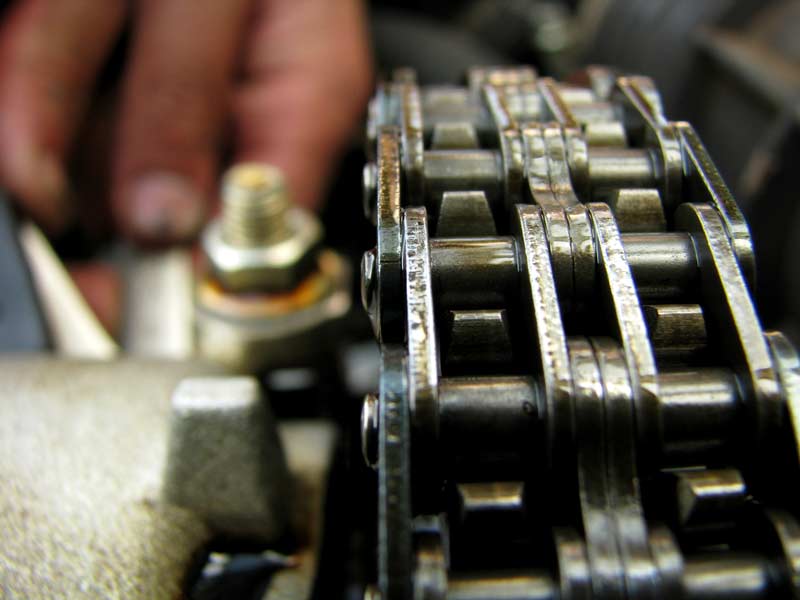Roller Chain Lubrication Made Easy

The most common type of power transmission chain used in industrial applications is the roller chain. It is found in almost every industry, including mining and quarrying, pulp and paper, and construction, and when cared for properly, roller chain should last for many years on most applications. However, inadequate lubrication is the leading cause of premature chain failure.
“Inadequate lubrication is the leading cause of premature chain failure”
Lubrication is essential to give a roller chain the best chance of achieving its maximum potential service life. It acts by forming a slippery film over the components, reducing direct metal-on-metal contact, hence minimising friction and wear. The barrier created by the lubricant also helps to protect the metal components against corrosion, as well as creating a buffer against the impact of sprocket-roller engagement, to reduce noise and provide smoother operation.
It is important to understand that any lubrication which is on the chain when it is taken out of its packaging is only meant for preventing corrosion in transit and to enable bedding in. The chain should be properly lubricated before operation begins.
The choice of lubrication is critical, and is dependent on the individual application. Generally speaking, heavy oils and greases are unsuitable, as their high viscosity means that they are too stiff to penetrate the pin-bushing joint – the most vital area for lubrication. Applying grease only to the outside of a chain will result in premature wear of the chain.
For the majority of applications, a high-quality, non-detergent, petroleum based or synthetic, multigrade SAE 20/50 oil will be suitable. However, the temperature of the application needs to be considered, as low temperatures increase the viscosity of the lubrication, whereas high temperatures may cause the lubricant to dissipate, carbonise or deteriorate more quickly, leaving oil residues which may impact chain performance.
The table below shows the recommended lubricant viscosity for ambient temperatures.

There are four main methods of lubricating chain drives. The first is manual lubrication. This involves manually applying lubricant to the chain with either a brush or oil can, approximately every 8 hours of operation. Although not the most precise method of lubrication, this is suitable for low speed applications, providing the chains are being monitored effectively to ensure coverage.
The second method of lubricating roller chains is drip lubrication. This means fitting an automatic oil drip to the application, which dispenses lubrication onto the chain at set intervals. This method is suitable for low speed applications, and reduces the labour costs associated with manual lubrication.
Another method of lubrication is via bath or disc lubrication. Bath lubrication involves running the chain through a pool of oil within the drive housing. Slinger disc lubrication is similar to a bath, but rather than the chain running through the pool of oil, a disc picks up the oil and deposits it onto the chain using deflection plates. This method is appropriate for medium speed applications.
The final method of lubrication is stream lubrication. This method is recommended for the highest speed applications. It involves directing a continuous stream of oil from a circulating pump or central lubrication system onto the chain, just before the chain engages with the driver sprocket. The engagement is then cushioned, and the oil is pushed inside the chain. This method also helps to keep the application temperature down, and an oil cooling system can be implemented for a further reduction in temperature.
For applications where lubrication is a challenge, it may be possible to use a lubrication free chain such as Tsubaki Lambda or Tsubaki PC chain. Both chains eliminate the need for lubrication, and ensure that the exterior of the chain remains free of excess lubrication, which is ideal for applications where contamination is a concern, such as in the food and beverage industry.
If you would like assistance in chosing the best chain for your application, our power transmission product expert can help.
